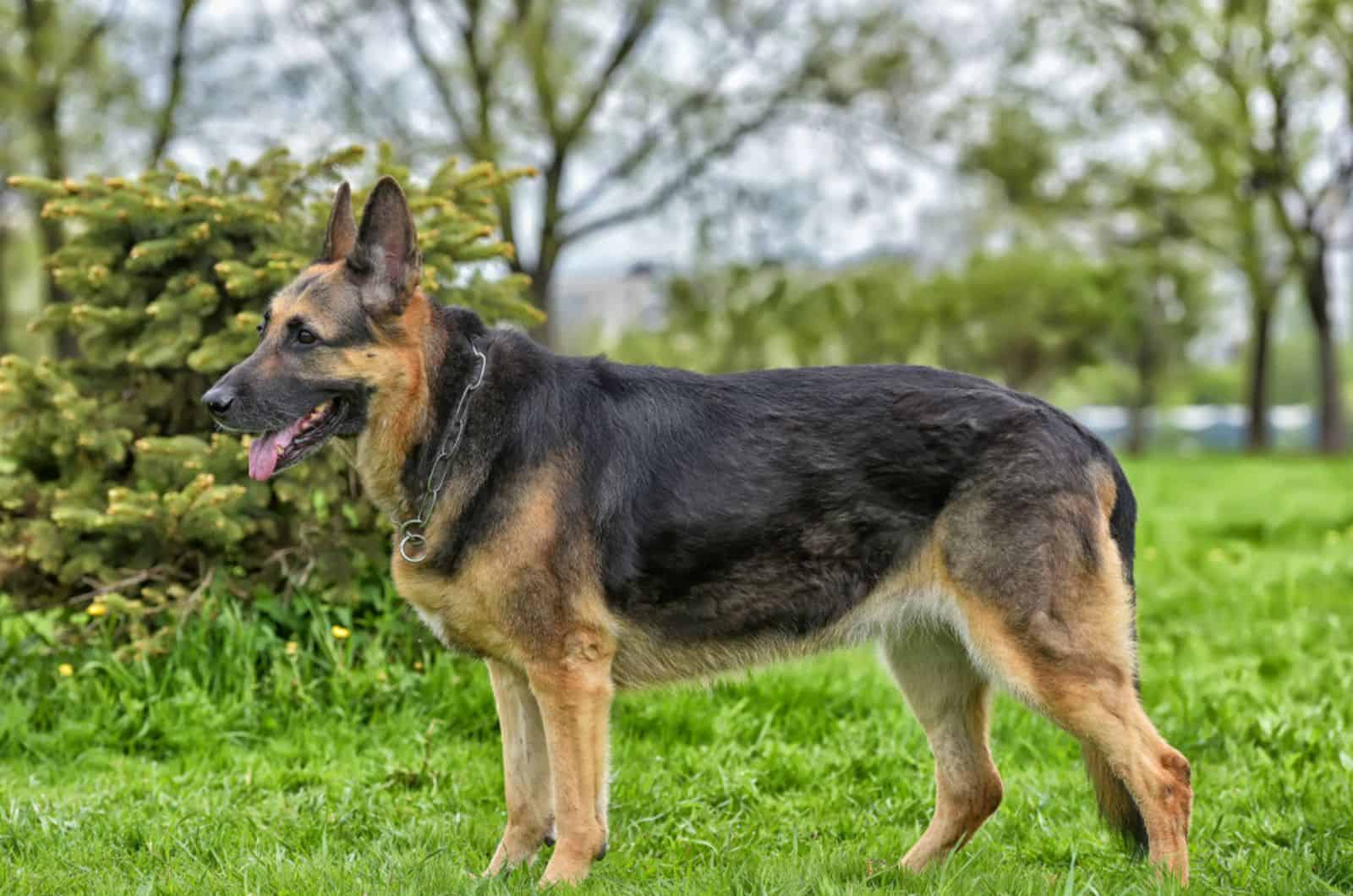As the time went by, breeders started selectively breeding GSDs with a sloped back because of their speed and agility. Straight back German Shepherds were once the only version of the GSD available for people to purchase.
However, the traditional version of the German Shepherd dog had more of a straight back, such as the Labrador Retriever has, for example.
There are many pros and cons to having a sloped back, as well as many pros and cons to having a straight back.
However, which version of this dog breed is healthier, happier, and a better companion? Were the straight back German Shepherd dogs healthier than the GSDs that we have available now?
Learning more about straight back German Shepherds might just be the answer to many of these burning questions; therefore, it is best that we find out together!
What Is A Straight Back German Shepherd?
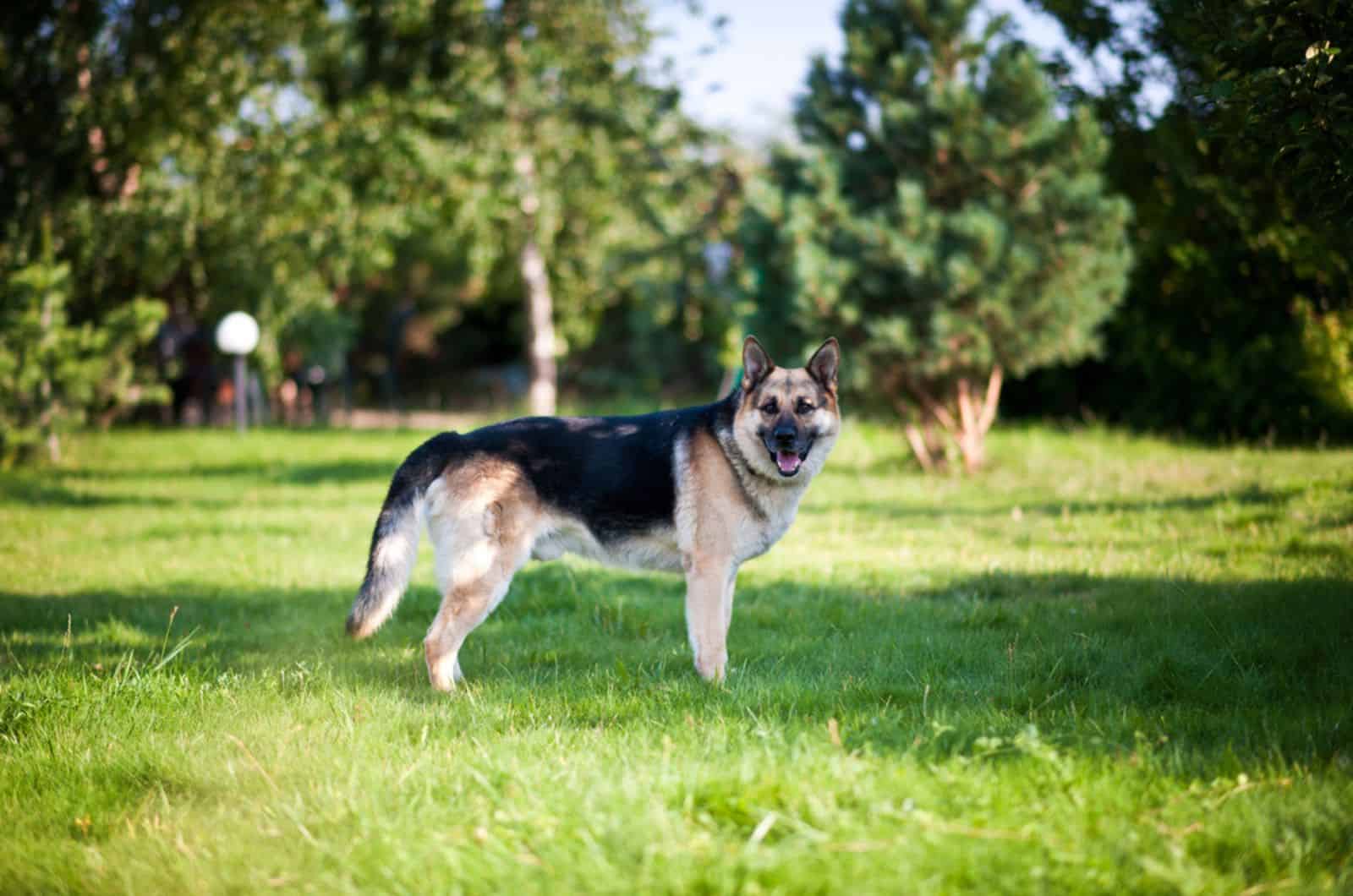
Well, if you are interested in buying or adopting a German Shepherd dog, you must have noticed their characteristic sloped back. Their back may not be something that you have been thinking about, but there is a lot of information regarding it that is worth your attention.
A straight back German Shepherd is the traditional, primary variation of the German Shepherd dog breed. From today’s perspective, it might seem odd to know that the progenitors of your GSD might have had a straight back, but this is quite probable.
The straight back German Shepherd is the primary kind of GSD, different from the sloped back German Shepherd simply because their back is straight. They are referred to as ‘old fashioned’ by experienced breeders and dog experts.
You might have heard that many people of older generations say that ‘things were better back then’. In this case, particularly, I can agree with that. Why? Because we, as modern human beings, always tend to want more from everything.
In this case, we wanted more from a GSD; therefore, we created a dog that was more agile, faster, stronger, more muscular, but what did we get with that?
We got a dog that has all of those characteristics that we intended it to have, but at what cost? Sloped-back GSDs now usually experience back problems, and terrible pain and aches because we wanted to ‘improve’ this dog breed.
Straight-Back Vs Sloped-Back GSD
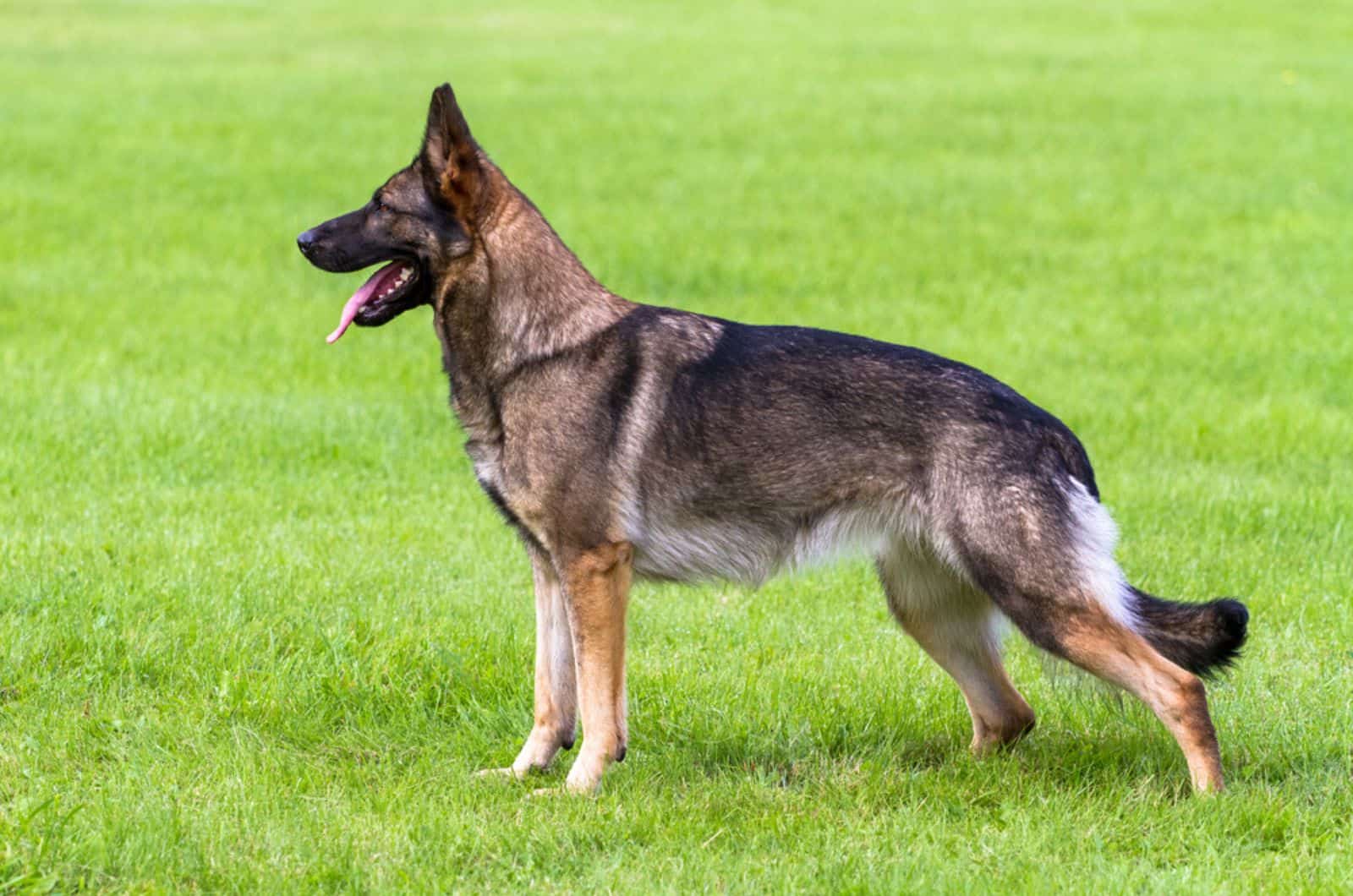
Straight back German Shepherds are unquestionably superior to those with a sloped back. German Shepherds were designed to have a straight back so that they could be energetic, quick, and healthy assistants on farms and in other situations.
They required a sturdy breed of dog that didn’t have many health problems.
Sadly, this has altered with the introduction of the new version because the German Shepherd’s unnaturally sloped back makes it far more susceptible to joint problems, hip dysplasia, and other health problems.
Additionally, when he founded the breed, Max von Stephanitz, the person who established the GSD dog breed, strongly supported the straight back. I wonder why!
The traditional GSD was bred and carefully designed to be the perfect working dog that has incredible stamina and strength, as well as being incredibly intelligent, so it can have a mind of its own and the ability to conclude and think independently.
In order to prevent becoming deceived into believing that it’s acceptable to breed a particular breed of dog with bad health simply because we enjoy the appearance, animal rescue organizations, dog breed specialists, and veterinarians find the straight back GSD better.
However, we cannot escape the breeding trends, and animals being genetically manipulated into certain dimensions, looks, shapes, and physical characteristics.
History Of The German Shepherd Dog Breed
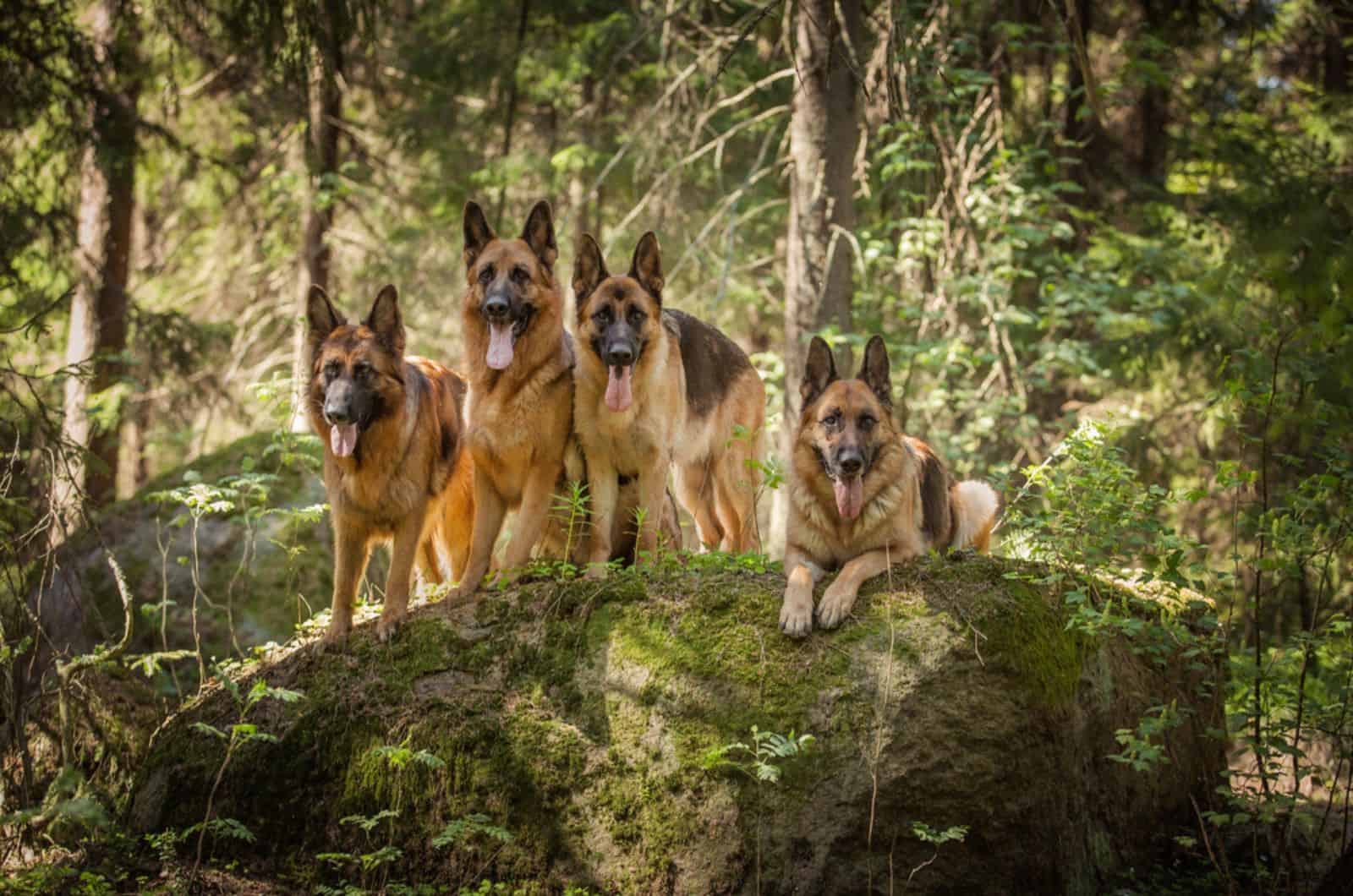
The German Shepherd, as its name suggests, was created in Germany during the late 1800s by the famous breeder, Max von Stephanitz.
What is generally recognized as the German Shepherd was developed via selective breeding of the smartest, most receptive, and most docile regional shepherd canines in Germany.
This breed was in charge of managing herds of sheep and other livestock, as well as guarding them from any potential danger that they might face. They were perceived more as servants for farmers and working dogs rather than pets, companion animals, or friends.
They were the ideal candidates for the job of managing sheep and livestock because of their intellect, agility, stamina, and strong sense of smell.
Farmers would provide the German Shepherd breed with food, fresh water, and shelter even though they were regarded as purely working dogs rather than domestic pets.
German Shepherds were especially recognized for their courage and working dog abilities during World War I and World War II, where they served and helped the soldiers, working as search and rescue dogs, service dogs, and guard dogs.
Von Stephanitz intended for this dog breed to have a well-rounded personality, which he clearly achieved since this dog breed can work in any condition, as well as be adaptable to any and every situation, and type of person.
Read more about: Fun facts about German Shepherd dogs
Physical Characteristics Of A Straight Back German Shepherd
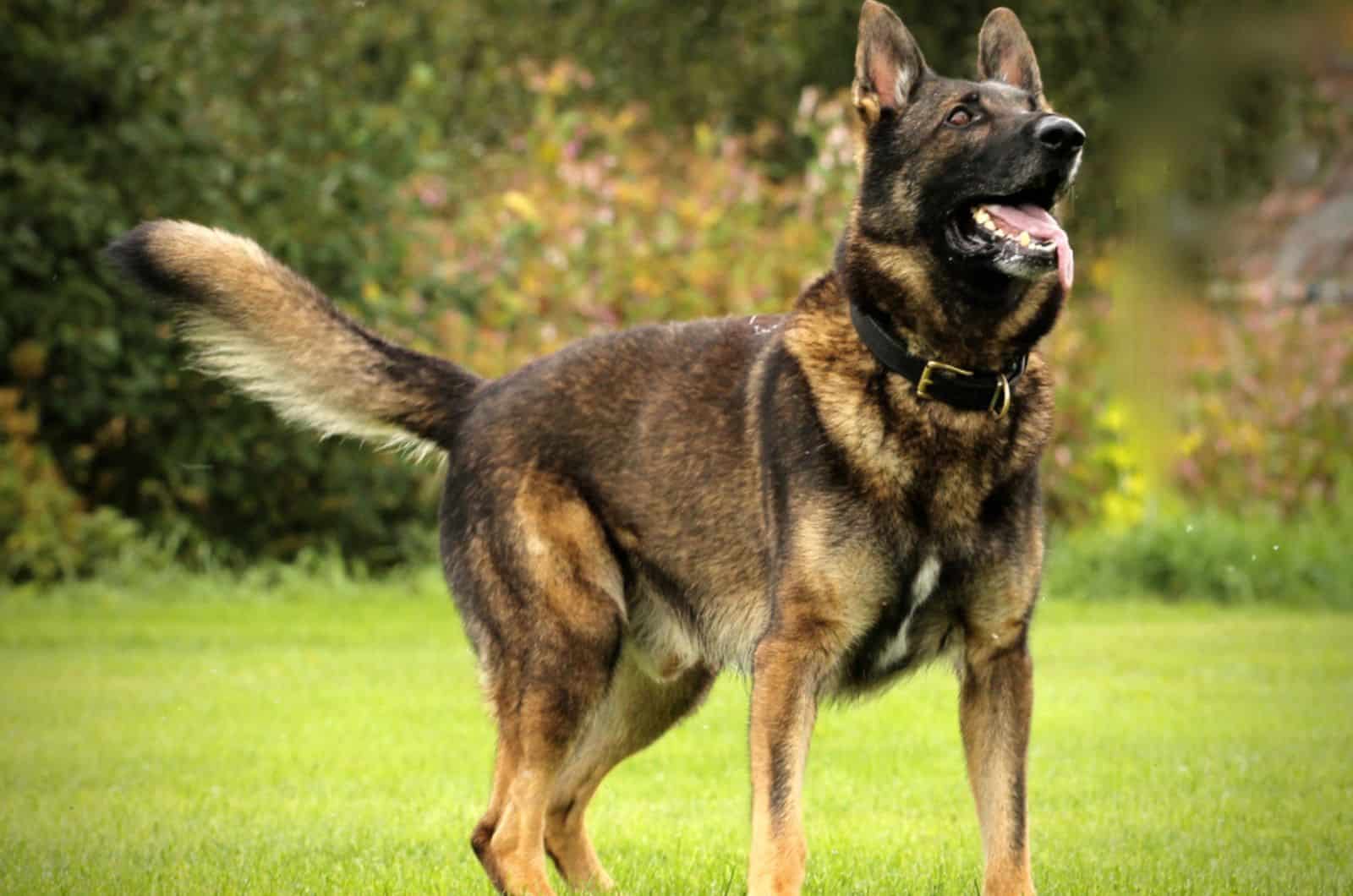
The straight back German Shepherd is a majestic and elegant dog breed that exudes power through its physical characteristics.
They have a big, bushy, and slender tail (even if their back isn’t sloped) that gives their whole body a ‘J shape’, in contrast to the modern GSD that has more of a ‘hook’ shape.
They have wonderful, dark brown eyes, which seem to be a source of warmth, compassion, intelligence, and unconditional love for their master.
They have floppy ears as puppies, but as they grow older, their floppy ears turn into alert, pointy ears that can hear and sense everything.
There are many coat colors when it comes to German Shepherds; however, the most famous color combinations are black and tan as well as sable. The straight back German Shepherds are large dogs that can weigh from 65 to 90 pounds.
Actually, there are 7 types of German Shepherds, all equally interesting, powerful, and smart!
Temperament And Behavior
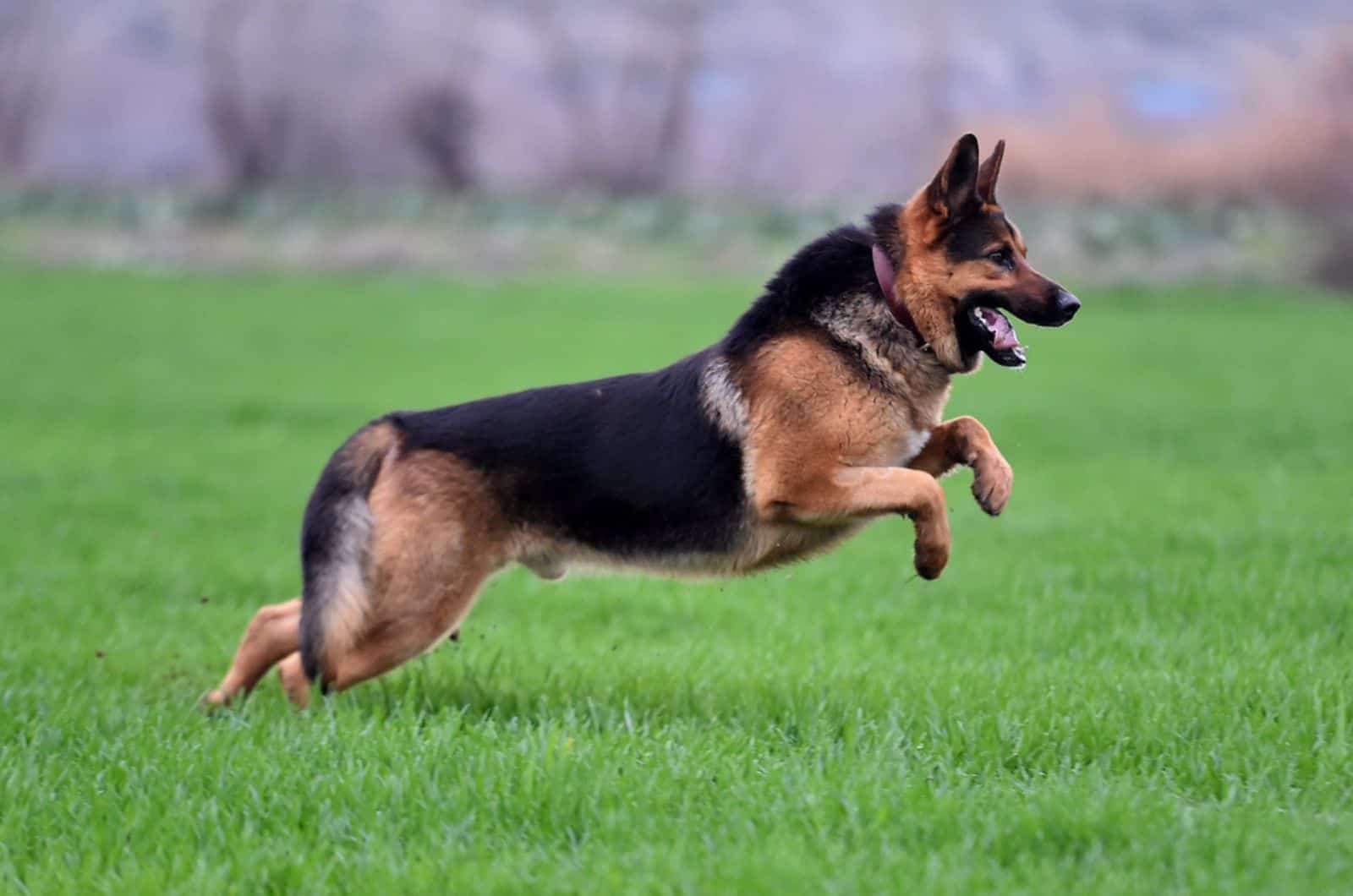
Straight back German Shepherd dogs have instincts of being fierce guard dogs for their family and all of the people they love. They are even known to be the type of dog that will risk their own life to save someone whom they care about.
Having these facts in mind, it is no wonder why GSDs are employed in many industries. Starting from working as police dogs, serving the army, search and rescue dogs, therapy dogs, service dogs, and their primary role… herding dogs and working dogs – these dogs can do it all.
They are not the friendliest dogs towards strangers and unfamiliar faces. This is because they were bred to guard, and not to be companion animals.
In order to eliminate this unwanted behavior, it is best to socialize them as soon as they open their eyes. You will have to train them also regarding when and when not to bark because these dogs are talkative, and they will bark at almost anything to warn you about it.
These dogs will be the happiest when they have something to do. They are used to being working dogs that always have a task to achieve, and anything less from that could potentially result in destructive behaviors.
If you want the straight back German shepherd to be your family dog, and you don’t have all of the time in the world, it would be good that you at least invest in some good interactive dog toys.
Is The Straight Back German Shepherd A Healthy Dog?

Since GSDs have changed over time, there are now diverse lineages and bloodlines of GSDs. A little more than a few generations after GSDs were first introduced to the world, the show line was developed from the initial working line.
Unfortunately, some well-known breeders focused on the GSDs’ physical perfection. They envision the ideal GSD as having a sloped back and the appearance of gliding through show rings. The outcome was a sloped back and angulated back legs.
Those with a sloped back and angulated legs do experience hip, back, and joint problems more frequently than the straight back German Shepherd does.
The straight back German Shepherd has fewer health problems since the biggest health issue of this dog breed is back problems, aches, and complications that can happen because of their distinct looks.
They don’t have many other problems than the regular illness of large dog breeds, known as hip dysplasia, which is an abnormal development of the hip joint that, as a result, makes the dog have problems with walking and moving around.
Other than that, some minor health issues, such as skin allergies and ear infections, can be easily managed by regular maintenance. By keeping your dog clean, regularly brushed, and its ears regularly cleaned with wipes, you will have a healthy and happy dog.
Final Word
The straight back German Shepherd dog is the older and initial version of the German Shepherd dog breed, which many experts believe is also a healthier version of the GSD.
People are becoming aware that not all modern sloped back GSDs will be healthy because not all German Shepherd breeders are reputable breeders. Therefore, if you decide upon the sloped back one, a reputable breeder is a must.
Our straight back German Shepherds are the original idea of this dog breeds’ creator; however, as the times are changing, the dog breeds are, too.
They don’t have any significant differences when it comes to behavior and personality traits, and they are as equally smart, powerful, and hard-working as the regular German Shepherd dogs.
